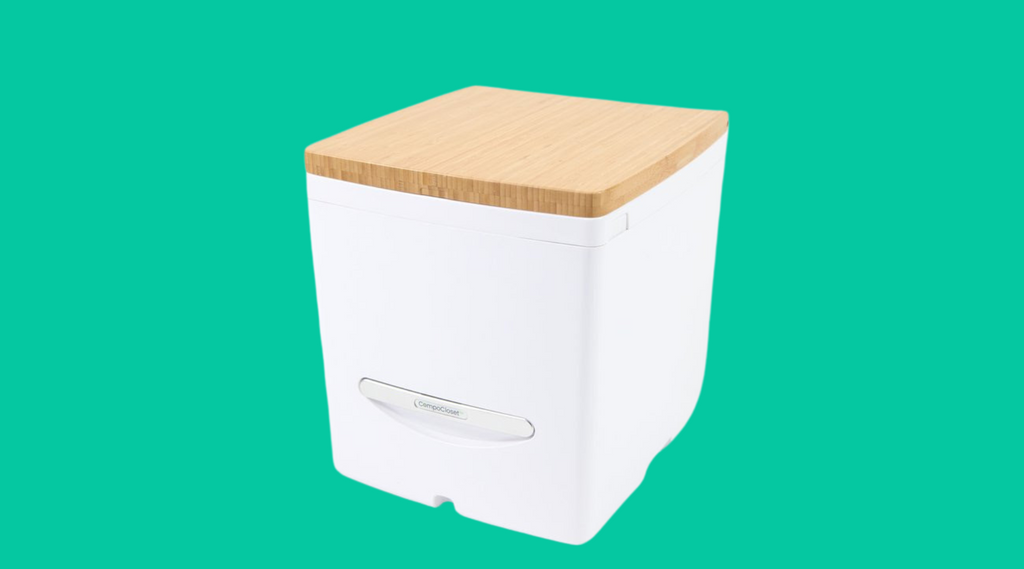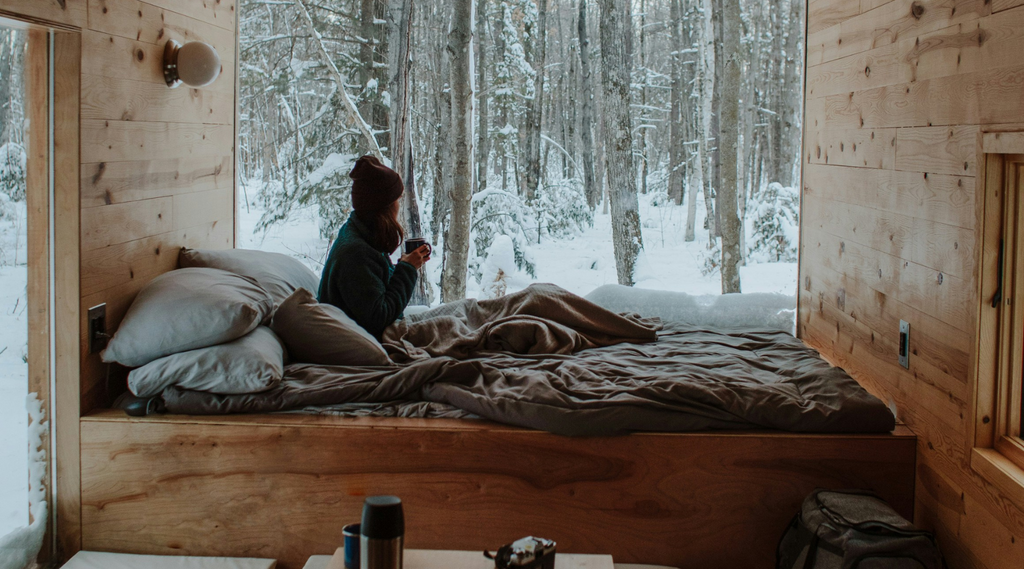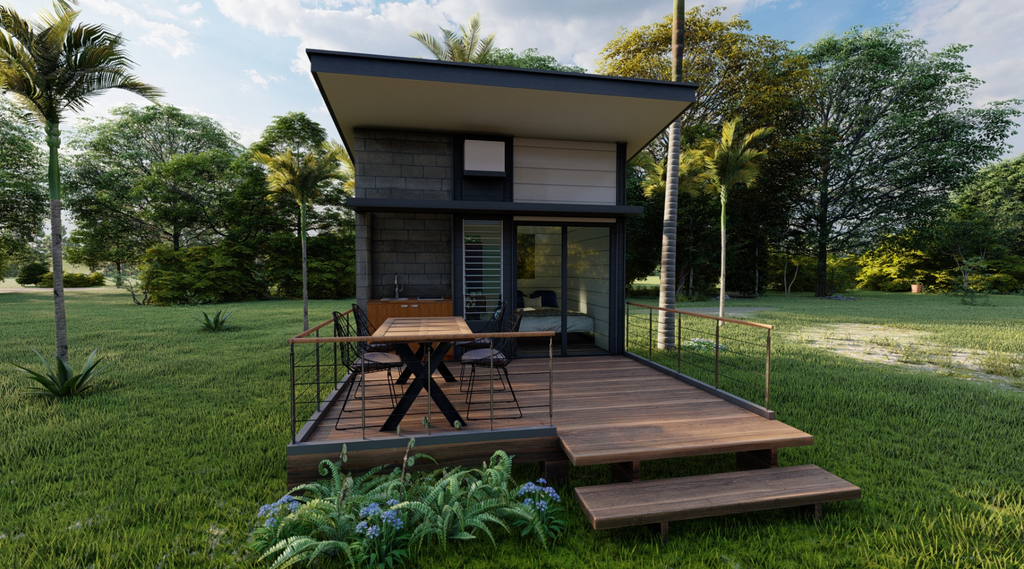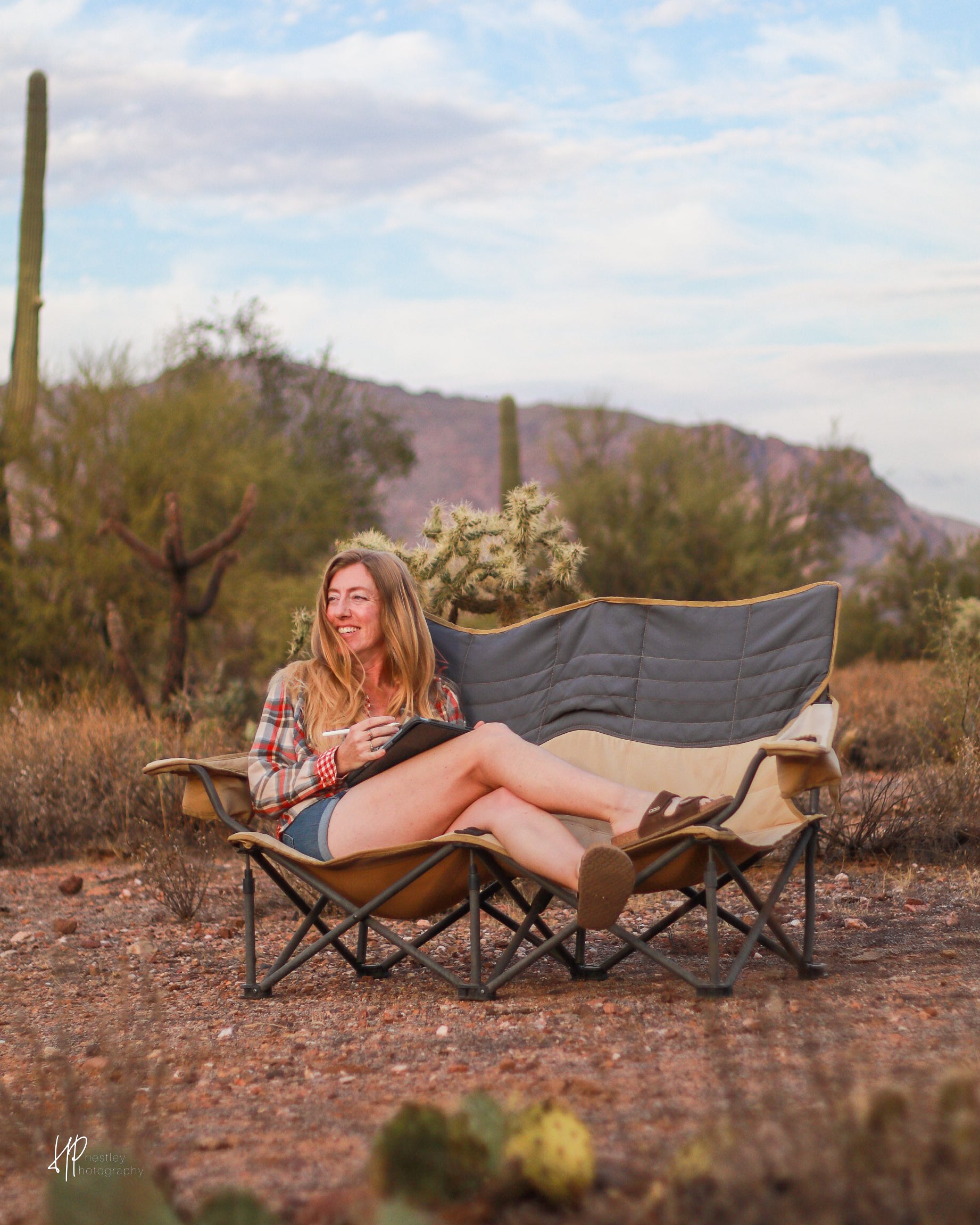Can I Put a Cuddy Compost Toilet in my Tiny House?

The short answer? YES! Cuddy is the perfect tiny house composting toilet. It's versatile, compact, sustainable, easy to clean, and it's pretty cute!
With Cuddy, you have the choice of it being a stand-alone composting toilet without being connected to a power source or a septic, or fully integrating it into your tiny home.
Let's dive into all of the reasons Cuddy makes a great compliment to your tiny house plans.
How a Composting Toilet Works in a Tiny Home
Compost toilets for tiny homes work no differently in a tiny house than in an RV, campervan, or boat.
They utilize natural processes of decomposition to effectively break down and eliminate solid human waste, also referred to as "humanure."
An organic substance (our favorite is coconut coir) is added to the solids container, and when you poo, you either add more or mix it into the matter with an agitator. This speeds up the initial breakdown process, not the full composting process, allowing for longer periods of time before having to empty the bin.
Once your solids container is full, you can either add it to your composting pile or bag it and throw it out, much like you would with baby diapers. Always double-check that the garbage receptacle allows disposal of human waste.
Composting toilets are designed to support the aerobic decomposition of organic matter, transforming it into a nutrient-rich material that can be safely returned to the environment or disposed of in an approved standard trash receptacle.
With Cuddy and Cuddy Lite, you can wire it in so an internal fan can ensure proper airflow, thus helping the composting process and supporting moisture control. You can vent your Cuddy or Cuddy Lite externally to provide more airflow. This is an excellent solution for moisture control if you use your composting toilet in an exceptionally humid climate.
Cuddy also has an optional Urine Drain-Away Kit that can be tied into a gray tank so you don't have to empty the liquid container manually.
Cuddy Lite doesn't have an agitator, so your solids bin will need to be emptied more often. For everyday use in a tiny house, we recommend our original Cuddy.

Why Use a Compost Toilet like Cuddy for Your Tiny House?
If you're considering living in a tiny house, you've probably also considered the benefits of composting toilets. Tiny living and sustainability often go hand-in-hand, and we're here to share why a composting toilet for a tiny house just makes sense.
With limited space and resources, every aspect of tiny house living requires careful consideration, including your bathroom and managing your poo!
Here are some of the top reasons you may want to opt for a tiny house composting toilet instead of a regular toilet.
1. Space Efficiency
A composting toilet for tiny house bathrooms is a game-changer when maximizing space in a tiny house. Unlike traditional flush toilets, which require plumbing and a large tank, the Cuddy composting toilet is compact and can fit into tight corners or even be installed as part of a multi-functional piece of furniture.
A stylish bamboo lid will transform your Cuddy into a bench seat while still fitting right up against a wall, taking up minimal space in your tiny house.
2. Off-Grid Capability
One of the most significant advantages of a tiny house composting toilet is its suitability for off-grid living. Traditional flush toilets rely on water and sewage systems, making them impractical for remote or off-grid locations.
Composting toilets, on the other hand, operate without water and do not require connection to sewage lines (or use Cuddy's adapter kit that will allow you to drain liquids into your black water tank if you want). This independence from infrastructure makes them ideal for tiny houses in remote areas, allowing you to live sustainably without sacrificing modern comforts.
3. Environmental Friendliness
Composting toilets are environmentally friendly alternatives to conventional flush toilets. Starting the composting process onsite eliminates the need for water-intensive sewage systems and reduces the carbon footprint associated with waste treatment and transportation.
Additionally, after your solids have been added to a compost pile or bin and the composting process is complete, it can be used as a nutrient-rich fertilizer for gardens, closing the loop on waste and promoting sustainable practices.
It's important to understand that solids from a compost toilet are not yet actually compost. The full composting process can take up to six months, and matter from your solids bin should never be placed directly into your garden.
4. Permitting and Regulatory Ease
For tiny house owners navigating the complexities of zoning regulations and building codes, a tiny home composting toilet can offer a simpler path to compliance. Since they do not require connection to sewage systems, permitting and regulatory approvals are often more straightforward than traditional toilets. This can save time, money, and hassle during the construction and certification process of tiny houses.
Keep in mind when considering your tiny house toilet option that many cities and/or municipalities require a septic system to be installed on any property that will be a full-time residence. Make sure to check compliance requirements on your property before planning to integrate a composting toilet into your tiny house.
If you are in a tiny house on wheels (THOW), then you’ll need to abide by the emptying regulations in your area, state, or country (whichever law leads in priority). We have a guide for where and when to empty RV toilets here - USA edition.
5. Low Maintenance
Contrary to common misconceptions, composting toilets are surprisingly low maintenance. While they require periodic solid matter emptying, modern designs like Cuddy's have streamlined this process.
Cuddy and UDDTs, in general, feature separate chambers for liquids and solids that can be removed independently of each other, simplifying the emptying and cleaning process. Depending on usage, Cuddy's solids bin typically needs to be emptied every 2-4 weeks, and the liquids bin every 1-2 days, making it a manageable option for tiny house residents. There's even an indicator light, so you know when to empty your liquids bin! (If you are using another UDDT, check their write-up on capacity to help you establish its fit for your home.)

Is a Tiny House Composting Toilet Right for You?
Composting toilets represent a sustainable and practical solution as a full-time toilet in tiny houses. They offer numerous advantages for tiny house dwellers, from their space-saving design to their off-grid capabilities and environmental benefits.
Cuddy helps you embrace this eco-friendly option so homeowners can reduce their environmental impact, simplify permitting processes in some locations, and enjoy greater freedom in choosing where to live.
As the tiny house movement continues to grow, composting toilets are poised to play a vital role in shaping the future of sustainable living.


